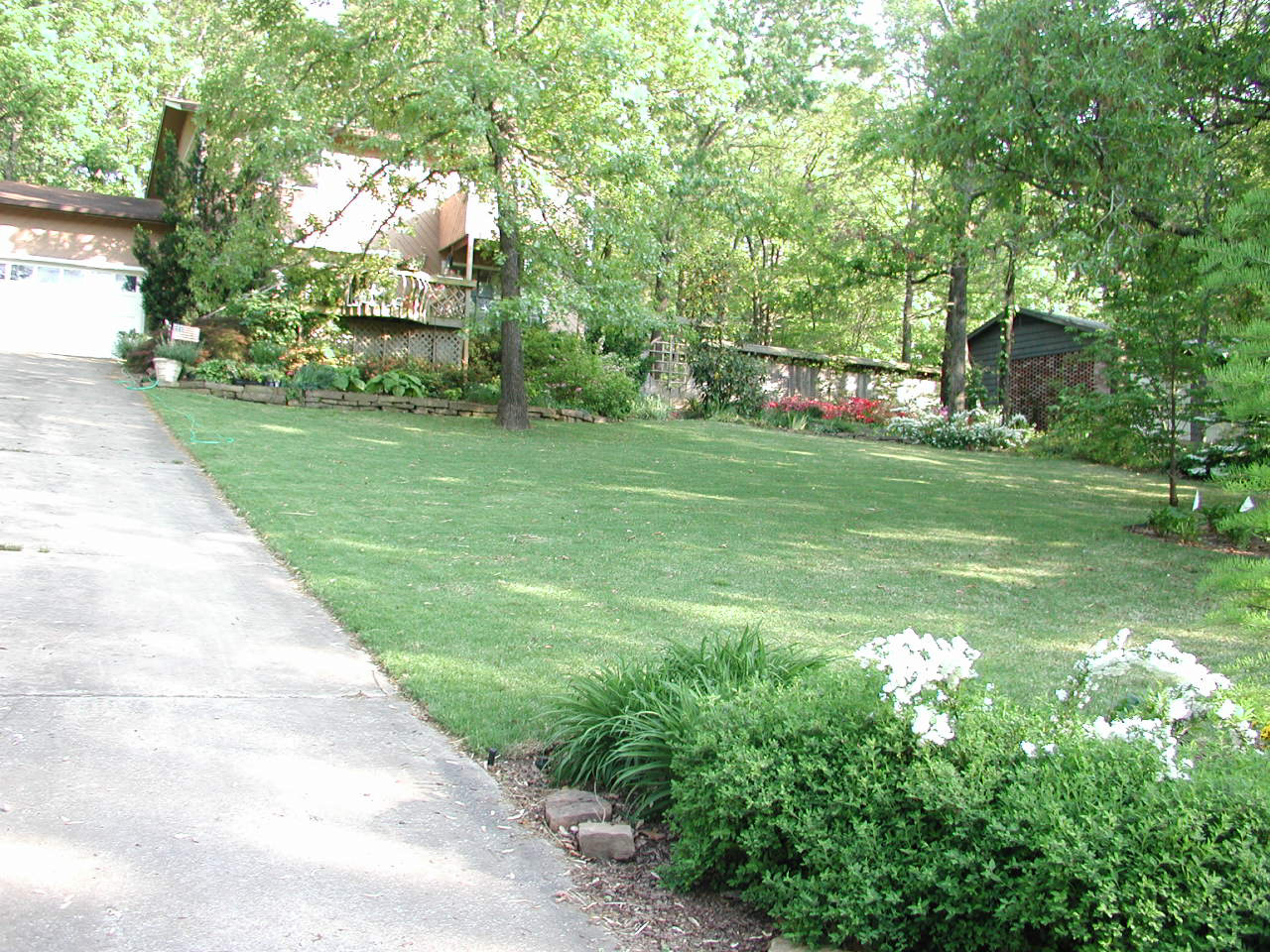Resource Library
Plant of the Week: Lawns
Last Saturday, Dave mowed my lawn. Well really, he used his riding lawn mower to grind up and compost the oak leaves that were lying atop my lawn. In the process, he mowed the six-inch-tall grass for the first time in two years. You see, I stopped mowing my lawn three years ago.
Over the years colleagues and of late, my wife, have criticized my lawn keeping ability. Yes, I know lawns are the carpet of the landscape, make good playing surfaces and that social norms – and in many instances city ordinances – dictate grass should be relentlessly shorn within an inch or two of the ground. But somehow it no longer made sense for me to mow my lawn, so I stopped. I’ve started calling it my “prairie chic lawn,” knowing full well it bears little resemblance to a true prairie.
I must admit lawn maintenance has never been my thing. Some people really get off on trying to have the perfect lawn and make a competition out of lawn care. A neighbor has such a lawn; a lush green cool season patch of grass that he cares for himself that looks better than what the lawn service companies can provide. Kudos to him, but rigid schedules, close attention to detail and strict adherence to social norms just doesn’t wear well for me.
My little lawn only took half an hour to mow, so laziness was only part of the reason I stopped mowing. I began to notice that the lawn was thinning out because over the past 20 years the oaks had grown. My lightly shaded zoysiagrass lawn had become moderately shaded over the years, bumping up against the physiological limits of zoysia photosynthesis. Repeated mowing reduces leaf surface area, reduced root growth into the soil and only exacerbates the problems caused by the encroachment of the tree canopy. If forced to choose between trees or lawn grass, I would choose trees every time.
The lawn as we know it today is largely an American construct with “Lawns” taking on major importance as a landscape design feature by 1900. In the 16th century the word referred to a clearing in the woods covered in grass; by the 18th century it had morphed into a patch of grass surrounded by flower beds. But here in the Colonies, lawns became Lawns (referred to in upper case by garden writers) as homes were built farther apart on larger lots as improved transportation made it possible to move away from city centers, beginning the great urban sprawl. The patch of land in front of the home was too small to farm but too big to ignore, so Lawns took on great importance. Allowing grass to grow and regularly mowing it down became the fallback position for everyone, be they gardeners or those who seldom went outside.
Before lawns became a thing, homes built in towns and cities were jammed close together with little room for lawns. On farms, land was devoted to pasturage, fields or vegetable gardens, with little time or energy devoted to aesthetic concerns. In the South, swept lawns were common, a tradition brought from Africa by the Slave trade. Bare, packed ground kept tidy by sweeping with brush brooms made insects and snakes easy to spot and prevented the spread of fire from house to house.
Several of my neighbors have done away with their own lawns, using different approaches. For too-shady sites, groundcovers are a common solution. One lady is a wildflower enthusiast and planted her sunny space to all manner of flowers. Somebody complained to the city and the inspector came, saying she would have to mow it down. Too tall, too untidy. She walked around the grounds spouting Latin names and convinced him it was an intentional planting, not and abandoned patch of weeds. Another neighbor allowed every tree and shrub to grow wantonly on his hillside lot. Today, the house is hidden in a thicket so dense, light can scarcely reach the ground.
My prairie chic lawn idea works for a couple reasons. First, my son’s lawn care service puts out a preemergence herbicide so I have a uniform carpet of zoysiagrass and no tall weeds. Secondly, in its unmowed state, zoysia only grows about six inches tall, shorter than would excite the ire of the lawn police. But most importantly, it works because in my situation it makes more sense than constantly cutting it back until the zoysia dies or replacing the lawn with a more shade tolerant species becomes necessary.
For more information about horticulture or to see other Plant of the Week columns, visit Extension’s Website, www.uaex.uada.edu, or contact your county extension agent. The Cooperative Extension Service is part of the U of A Division of Agriculture.
